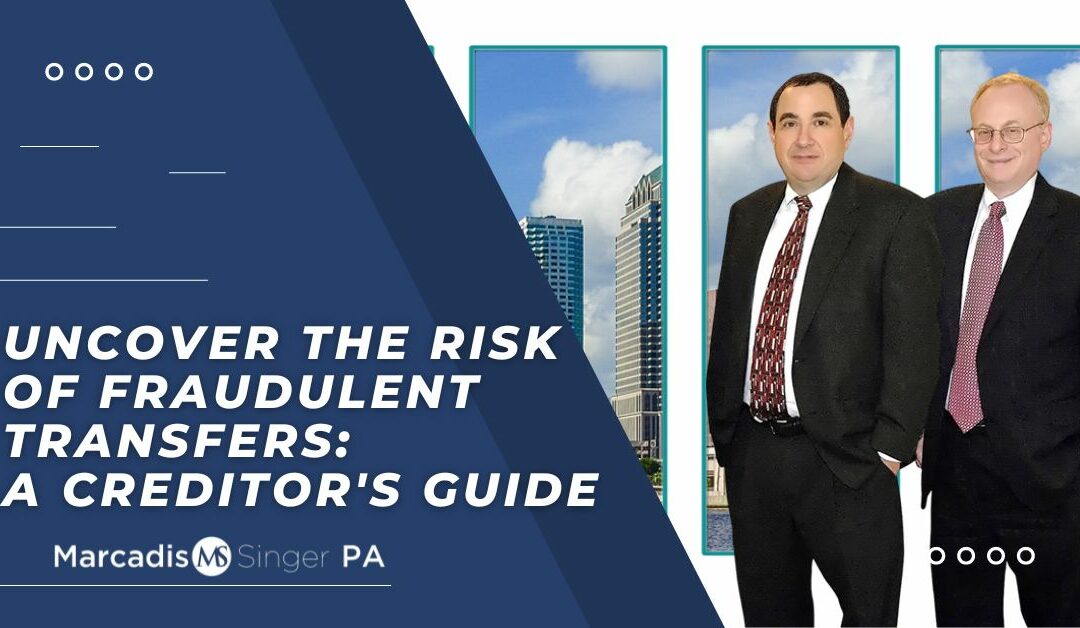Creditors often face multiple challenges when attempting to collect outstanding debts. One of the most significant challenges is dealing with fraudulent transfers. Fraudulent transfers occur when a debtor transfers assets to another person or entity to avoid paying their debts. This article explores the top five issues for creditors concerning fraudulent transfers.
 Identifying Fraudulent Transfers
Identifying Fraudulent Transfers
The first issue for creditors is determining whether a transfer was fraudulent. This can be difficult, as fraudulent transfers are often disguised as legitimate transactions. For example, a debtor may transfer assets to a family member or friend for little or no consideration, making it appear like a gift rather than an attempt to avoid paying debts.
Examples:
- A debtor transfers a valuable piece of property to a relative for a nominal fee, even though the property is worth much more.
- A debtor creates a trust and transfers assets into it, making it difficult for creditors to access those assets.
To identify fraudulent transfers, creditors may need to investigate the debtor’s financial transactions and relationships to determine whether the transfer was made with the intent to defraud creditors.
Timing Of Fraudulent Transfers
Another issue for creditors is the transfer timing. If the transfer of assets occurs before the debt is incurred or before the creditor has obtained a judgment against the debtor, it is more difficult to prove that the transfer is a Fraudulent Transfer in court. However, if the transfer occurs after the debt is incurred or after the creditor has obtained a judgment, it may be possible for the creditor to recover the transferred assets.
Examples:
- A debtor transfers assets to a family member after a creditor obtains a judgment against them, thinking that it will protect the assets from being seized by the creditor.
- A debtor transfers assets to a business partner before incurring a debt, making it more difficult for the creditor to collect the debt.
Fraudulently Transferred Asset Valuation
Another issue for creditors is the value of the fraudulently transferred assets. To recover the assets, the creditor must be able to show that the transfer was made for less than the fair market value of the assets. On the other hand, if the transfer was made for fair market value, it may be more difficult for the creditor to recover the assets.
Examples:
- A debtor transfers a valuable painting to a friend for a nominal fee, even though the artwork is worth much more.
- A debtor transfers assets to a trust for their children, but the value of the assets is equal to the amount of debt owed to creditors.
 Proving Intent To Defraud
Proving Intent To Defraud
To recover fraudulently transferred assets, creditors must be able to prove that the transfer was made with the intent to defraud creditors. This can be difficult, as the debtor may claim that the transfer was made for legitimate reasons.
Examples:
- A debtor transfers assets to a family member to help them start a business, but the creditor claims the transfer was made to avoid paying debts.
- A debtor transfers assets to a trust to protect them from potential litigation, but the creditor claims that the transfer was made to avoid paying debts.
The Cost Of Pursuing Fraudulent Transfers
Finally, creditors must consider the cost of pursuing fraudulent transfers. Recovering fraudulently transferred assets can be time-consuming and expensive, and creditors must weigh the potential benefits against the cost of pursuing the assets.
Examples:
- A creditor spends thousands of dollars on legal fees and investigations to recover fraudulently transferred assets but ultimately recovers only a small portion of the debt owed.
- A creditor decides not to pursue fraudulently transferred assets due to the high cost of legal fees and the likelihood of success.
In conclusion, fraudulent transfers are a significant issue for creditors, and they must navigate a range of legal and practical challenges when attempting to recover fraudulently transferred assets. By identifying fraudulent transfers, understanding the timing of the transfer, and evaluating the value of the assets, creditors can increase their chances of successfully recovering the assets. However, they must also consider the cost of pursuing these assets and the difficulty of proving intent to defraud.
Creditors faced with the issue of fraudulent transfer must:
- Identify fraudulent transfers by investigating financial transactions and relationships
- Understand the timing of the transfer and the potential impact on recovery
- Evaluate the value of the transferred assets and whether they were made for less than fair market value
- Prove intent to defraud by demonstrating that the transfer was made to avoid debt payments
- Consider the cost of pursuing fraudulent transfers and the likelihood of success
Navigating these challenges can be difficult, but with the help of experienced legal counsel and a thorough understanding of the legal landscape, creditors can increase their chances of recovering fraudulently transferred assets.
